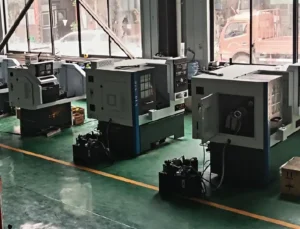how do you program a CNC machine?
Programming a CNC Machine
Computer Numerical Control (CNC) machines have revolutionized the manufacturing industry by automating the production of complex and precise parts. Programming a CNC machine plays a vital role in the manufacturing process because it defines the machine’s actions to accurately produce the intended part.
This article explores the detailed process of CNC machine programming, specifically designed for engineers who have a background in manufacturing.

Understanding CNC Programming
Before diving into the specifics of programming a CNC machine, it is essential to understand the basics of CNC programming.
CNC programming requires creating a detailed set of instructions that control the movements and operations of a CNC machine to accurately fabricate a specific part.
These instructions are typically written in a language called G-code, which is a standardized programming language for CNC machines.
Gathering Requirements
The first step in programming a CNC machine is to gather all the necessary requirements for the part to be manufactured.
This includes the part design, material specifications, cutting tools to be used, machining operations, and any other relevant information.
With a clear understanding of these requirements, you can proceed to create a program that will guide the CNC machine in producing the part accurately.
Creating a CAD Model
Once you gather all the requirements, the next step is to create a Computer-Aided Design (CAD) model of the part you want to manufacture.
The CAD model provides a visual representation of the part and helps you visualize the machining operations you need to perform. You can then use this model to generate the toolpaths required to machine the part.
Generating Toolpaths
Toolpaths are the paths that cutting tools follow to remove material from the workpiece and shape it into the desired part.
Various software tools can generate toolpaths based on the CAD model of the part and the machining operations you plan to perform.
You need to optimize these toolpaths for efficiency and accuracy to ensure you manufacture the part to the desired specifications.
Writing G-Code
Once the toolpaths have been generated, the next step is to write the G-code program that will guide the CNC machine in executing these toolpaths.
G-code is a series of commands that tell the CNC machine how to move, what tools to use, and how fast to cut.
Each command in the G-code program corresponds to a specific action that the machine needs to perform, such as moving the tool to a certain position, setting the cutting speed, or changing the tool.
Validating the Program
Before running the program on the CNC machine, it is essential to validate the program to ensure that it will produce the desired part accurately.
This can be done through simulation software that simulates the machining operations based on the G-code program.
By simulating the program, you can identify any errors or issues that may arise during actual machining and make the necessary adjustments to the program.
Setting Up the CNC Machine
Once the program has been validated, the next step is to set up the CNC machine for machining.
This includes loading the program into the machine’s controller, setting up the workpiece and tools, and calibrating the machine for accuracy. Proper setup is crucial for achieving precise and consistent results during machining.
Running the Program
With the CNC machine set up and the program loaded, it is time to run the program and start machining the part.
During machining, it is essential to monitor the machine’s performance and make any adjustments as necessary to ensure that the part is being manufactured according to the specifications.
Constant monitoring and supervision are key to achieving high-quality results.
Fine-tuning the Program
After machining the part, it is essential to review the results and fine-tune the program if needed.
This may involve making adjustments to the toolpaths, cutting speeds, or tool parameters to improve the quality of the part.
By continuously iterating on the program and making improvements, you can optimize the manufacturing process for better efficiency and accuracy.
Conclusion
Programming a CNC machine requires a deep understanding of the machining process, CAD/CAM software tools, and G-code programming.
By following the steps outlined in this article and paying attention to detail, engineers with a manufacturing background can successfully program CNC machines to manufacture precise and complex parts.
Continuous learning and refinement of programming skills are essential for staying ahead in the ever-evolving manufacturing industry.

